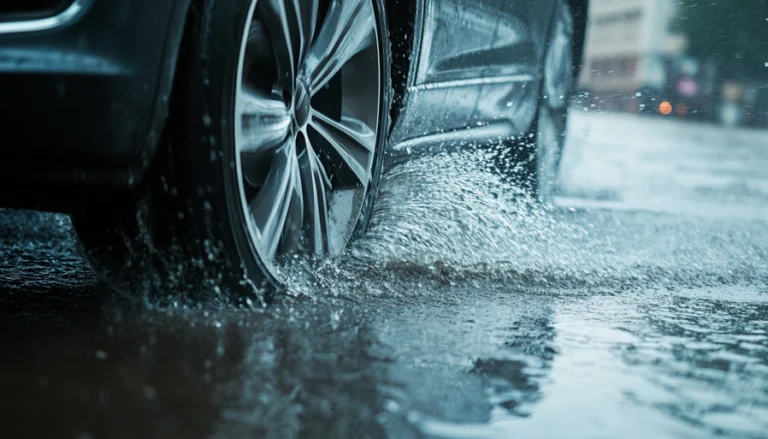Driving in wet weather can be challenging, especially when faced with the risk of hydroplaning. Hydroplaning occurs when a thin layer of water builds between your vehicle’s tires and the road, causing a loss of traction and control. It’s an unnerving experience that every driver should aim to avoid. But don’t worry, we’re here to help you stay safe by breaking down what you need to know and do to prevent this from happening.
This guide explains what hydroplaning is, why it happens, and most importantly, how you can lower your risk. Whether you’re a seasoned driver or just starting out, these practical tips and insights will give you the confidence to handle diving in rainy weather like a pro. Let’s dive into the details so you can stay in control, rain or shine.
Understanding Hydroplaning
To prevent hydroplaning, it’s crucial to understand how it works. Hydroplaning happens when your tires encounter more water than they can push away. This causes a thin layer of water to form under the tires, leading to a loss of traction. When this happens, steering, braking, and acceleration can become ineffective, a scary situation for any driver.
Several factors contribute to hydroplaning:
- Vehicle speed: The faster you go, the harder it is for your tires to channel water away.
- Tread depth: Shallow tread depths can’t displace water effectively.
- Water depth and drainage conditions: These play a significant role in hydroplaning risks.
- Vehicle weight: Lighter vehicles are more susceptible than heavier ones.
Knowing these factors can help you anticipate and avoid hydroplaning. Awareness is the first step toward safe driving, so let’s explore how you can recognize the signs and respond effectively.
Recognizing Hydroplaning
Recognizing hydroplaning as it’s happening can make all the difference. You’ll often feel:
- A sudden lightness in the steering wheel, as if the car is floating.
- The engine’s RPMs increasing unexpectedly.
- The vehicle pulling to one side without steering input.
If you suspect you’re hydroplaning, the key is to stay calm:
- Do not slam the brakes or jerk the steering wheel.
- Gently ease off the accelerator and allow the car to slow naturally.
- Hold the steering wheel steady until you feel the tires regain traction.
Recognizing these warning signs early is a critical skill for any driver.
Preventive Measures
Preventing hydroplaning starts with proactive measures. Here are some steps to reduce your risk:
Maintain Appropriate Speed
- Hydroplaning becomes more likely at speeds above 35 mph.
- Reduce your speed during rainfall and leave extra time for your journey.
Ensure Proper Tire Maintenance
- Check tread depth regularly: Use the “penny test” to ensure sufficient depth.
- Maintain proper tire pressure: Follow your vehicle’s recommended levels.
- Schedule tire rotation and balancing: This ensures even tire wear and optimal performance.
Avoid Sudden Movements
- Smooth driving is key in wet conditions.
- Gradually accelerate, brake, and steer to maintain traction.
Monitor Road Conditions
- Be aware of road surface types and drainage conditions.
- Avoid large puddles and areas of standing water whenever possible.
Use Technology to Your Advantage
- Utilize features like anti-lock brakes (ABS) and electronic stability control (ESC).
- These systems can help you maintain control during slippery conditions.
Defensive Driving Practices
- Increase following distance in poor weather conditions to allow more reaction time.
- Avoid using cruise control on wet roadways.
- Stick to outer lanes if they appear less flooded.
- Shift to a lower gear for better traction when needed.
By implementing these measures, you can significantly reduce your risk of hydroplaning. Remember, safe driving is all about preparation and awareness.
Final Thoughts on Lowering the Risk of Hydroplaning
Hydroplaning can be a nerve-wracking experience, but with the right knowledge and precautions, you can minimize your risk and drive with confidence. Understanding what causes hydroplaning, recognizing the warning signs, and adopting safe driving habits are all essential steps toward staying safe on wet roads.
Make tire maintenance, speed management, and road awareness a regular part of your driving routine. Use safety tips like monitoring rainfall intensity, maintaining proper tire pressure, and avoiding standing water to stay safe. With these strategies in mind, you’ll be well-prepared to handle rainy conditions and keep yourself and others safe. Driving safely isn’t just about reacting, it’s about anticipating and preventing risks before they happen.

